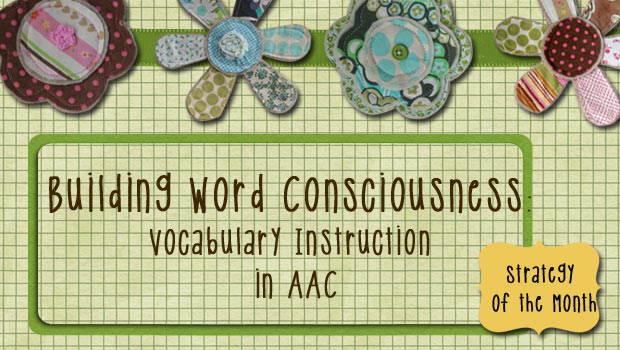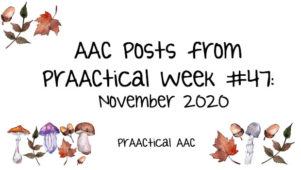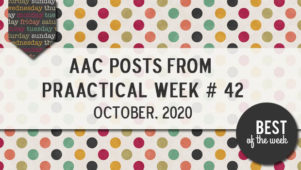Building Word Consciousness: Vocabulary Instruction in AAC

The mind is not a vessel to be filled but a fire to be kindled. Plutarch
Last week, Robin discussed some strategies and activities for teaching new words to individuals who are at the earlier stages of language learning. This week, we move ahead and address semantic instruction for individuals who regularly create sentences to express themselves.
One of my favorite things about working with AAC learners at this level is the opportunity for having metalinguistic conversations. Getting them to think and talk about language can accelerate their learning. Here are some prAACtical thoughts on how this relates to semantics with a focus on building word consciousness.
We’re all familiar with music appreciation and art appreciation. I always think of word consciousness as a sort of like word appreciation. It refers to an awareness that words are the building blocks of language and that they can be examined and manipulated (Scott, Skobel, & Wells, 2008). Creating an environment that builds word consciousness means that we prioritize finding new words, figuring out what they mean, looking for multiple meanings, and adding them to our linguistic repertoire.
Building word consciousness is powerful, addictive, and fun. It is also an effective tool for vocabulary building. For more advanced language users, we can help them become more aware of and interested in the words they hear as they move throughout their daily lives. We can create a culture in which values paying attention to new words and developing a curiosity about what they mean and how they are used. There are a number of ways in which we can do this a few of which we’ve already spoken about (e.g., focused language stimulation, word learning theme or metaphor, using visual supports).
Another way to get learners thinking about their own word knowledge is to have them participate in self-assessment as part of our semantic instruction. The idea here is to get learners thinking about how much they know or don’t know about a particular word. I like visual rating scales for this (e.g., 1=I never heard it before, 2=I heard it but don’t know what it means, 3=I know a little about it, 4=I know a lot about it, 5=I know this word really well).
Here are other ways to create a strong word-learning environment.
- As you talk, call attention to new words and relate them to known words.
- Tell stories that feature the new words. When appropriate, connect the word with a strong feeling or emotion to promote interest and retention.
- Make associations. Point out similarities and differences between words.
- Instruct the AAC learner to listen for examples of the new word and catch you (and others) saying it.
- Give both positive and negative examples of how the word is used.
- When you encounter a new word, have learners reflect on their prior experiences with it. “Where have you heard this word before?” Helping them to make that connection promotes a fuller understanding of the word meaning.
- Connect the new words to the learner’s life experience.
- Provide a variety of tools for word exploration and play. (We’ll be blogging about that as the month progresses.)
- Observe carefully and notice when the augmented communicator uses new words. Celebrate those efforts, even if they are not perfect. Progress, not perfection, is the goal at this point.
Real vocabulary building is never about lists or drills or quiz scores. And it’s not about just saying new words aloud with an SGD, either. It’s about building an awareness of and words with focused language input and exploring meaning through planned instructional activities that give the learners increasing clarity as to what the new words means and how they can use them. It’s about repeated opportunities to retrieve and use new words while answering questions, talking with others, and writing. It’s about adults giving clear explanations of the new words when they use them, providing synonyms, and showing multiple examples and illustrations. It’s about continuing to use those words over time so that the learner doesn’t forget. And for some AAC learners, it’s about having conversations not just with words but about them.
Scott, J., Skobel, B., & Wells, J. (2008). The Word Conscious Classroom: Building the Vocabulary Reader and Writers Need. NY: Scholastic.
Filed under: Strategy of the Month
Tagged With: intervention, language therapy, new words, semantics, vocabulary, word consciousness
This post was written by Carole Zangari




